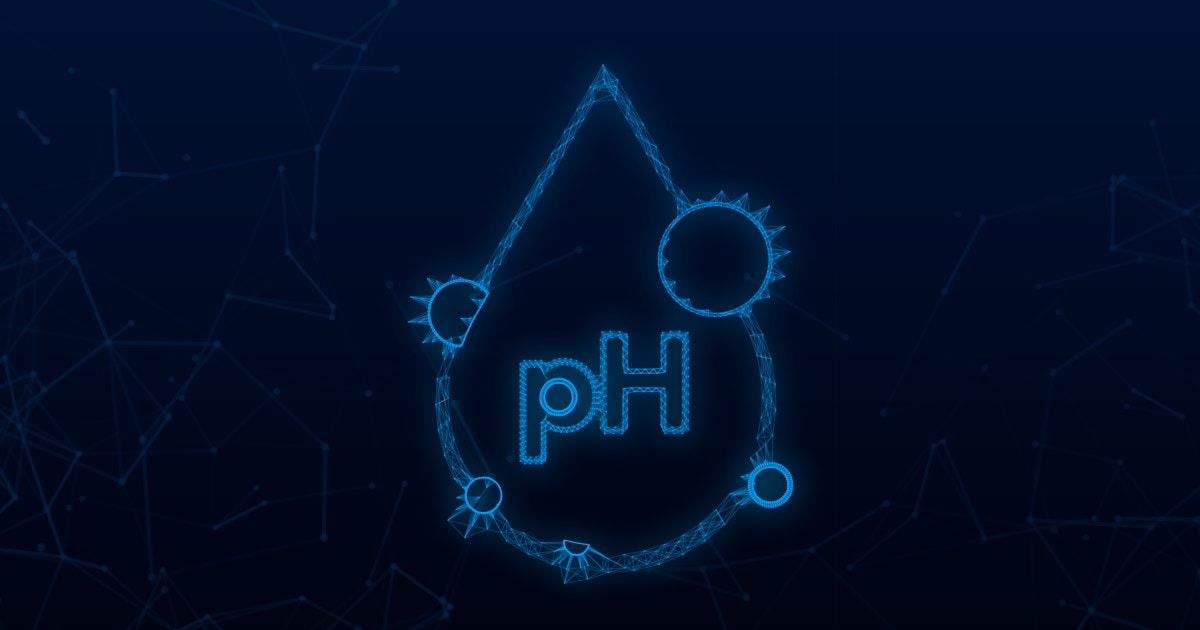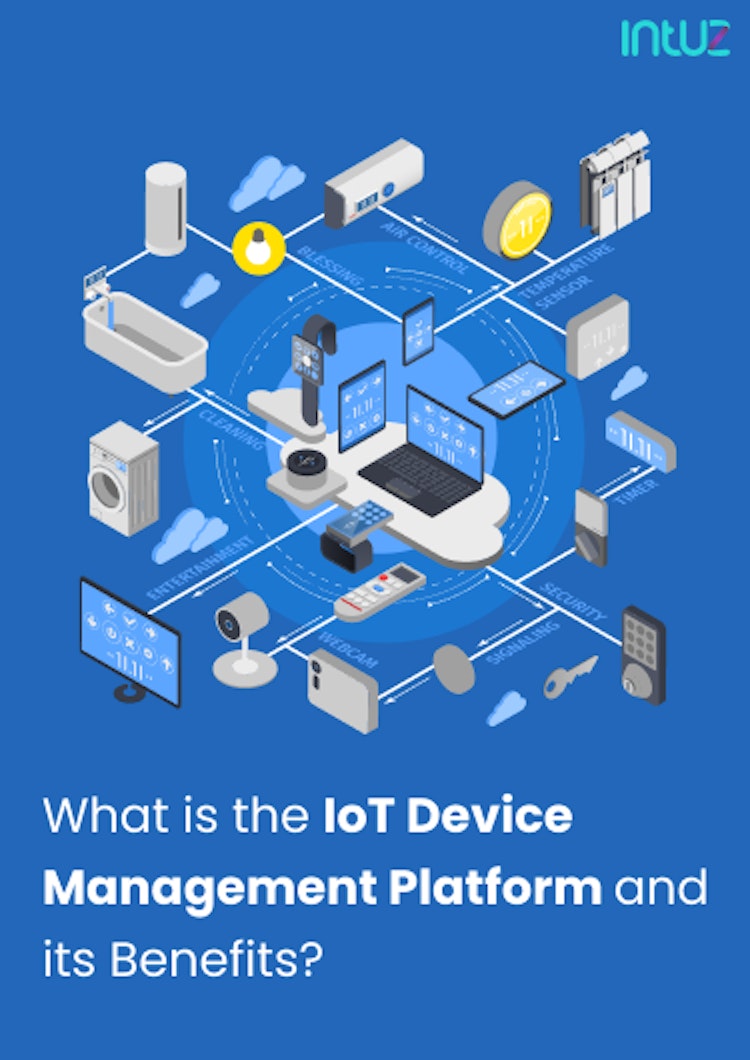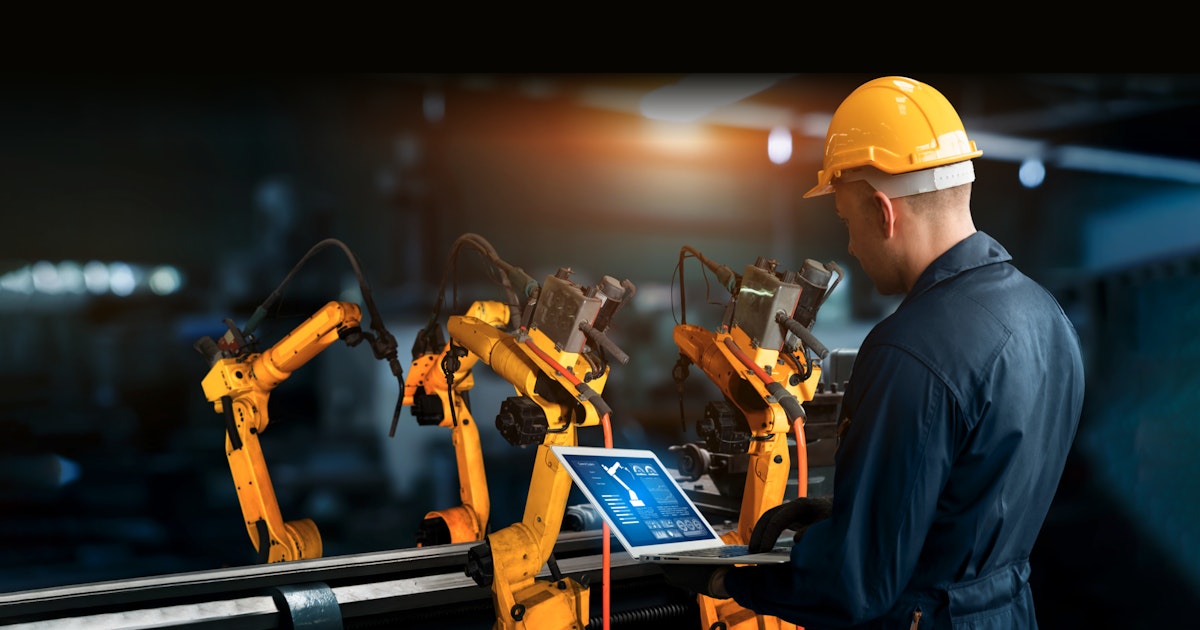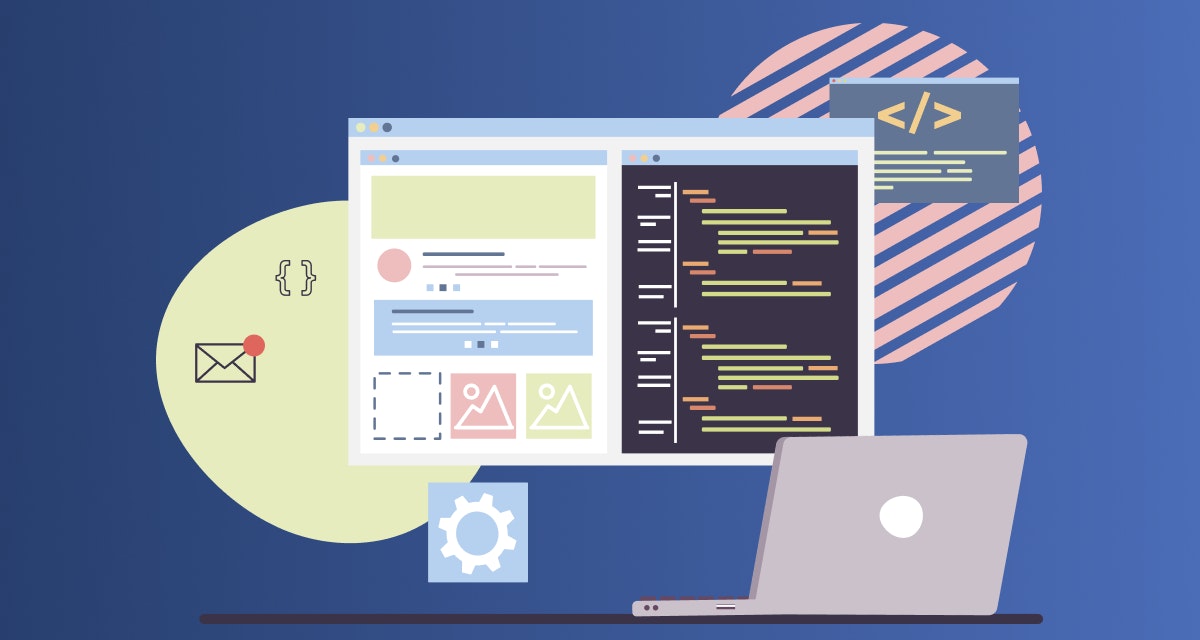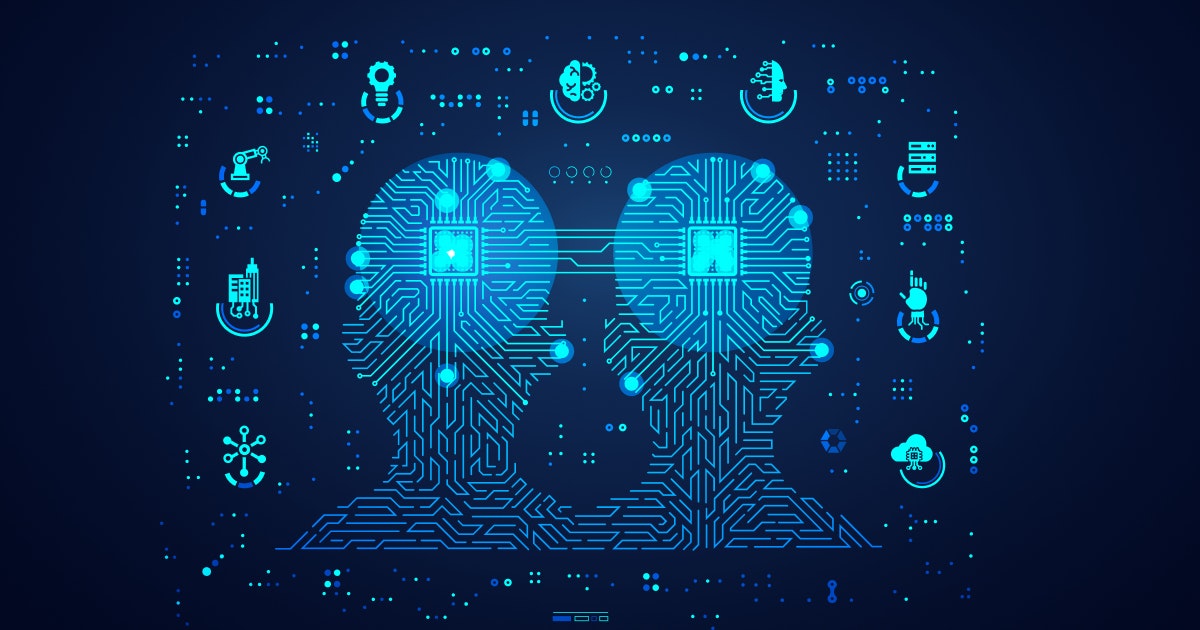Table of Content
Role of IoT-Based Water Quality Monitoring in Sustainable Water Management
Water scarcity and contamination pose serious challenges. However, an IoT based water quality monitoring system serves as one of the solutions to address these issues. The real time data collection can help governments and authorities track water levels and detect anomalies.
Sensors can also measure pH, turbidity, temperature and chemical composition. This allows quick action to prevent contamination.
At Intuz, we develop scalable smart water management with IoT solutions. They can provide predictive analysis and remote monitoring capabilities. By integrating AI-driven analytics cloud platform and automated alerts, our technology can help businesses build custom monitoring systems. They can aid in optimising water usage and meet environmental guidelines.
What is an IoT-based Smart Water Quality Monitoring?
IoT-based smart water quality monitoring is the process of measuring the water quality parameters, such as temperature, pH, turbidity, dissolved oxygen levels, variety of ions present, and so on. The main objective of monitoring water quality is to ensure these parameters are within a suitable range.
By leveraging the Internet of Things (IoT), SWQM (smart water quality monitoring) systems employ interconnected sensors to continuously collect, transmit, and analyze water quality data in real-time.
The traditional method of water monitoring was done physically, using only chemicals. SWQM offers significant advantages over traditional monitoring methods, including remote access to data, predictive analysis capabilities, and automated alerts for immediate response to water quality issues.
A water quality monitoring application involves using different IoT-based smart sensors that keep track of the parameters in real time.
Components of IoT Water Quality Monitoring System
The hardware utilized in an IoT ecosystem includes servers, a routing device, IoT sensors, and others that manage essential functions such as system activation, security communication, action specifications, and detection to support specific goals and actions.

1. Ultrasonic sensor
As the name suggests, the sensor generates a high-frequency sound wave of 40 kHz to send and receive ultrasonic pulses that relay back information about an object's proximity. This hardware provides a 2 cm to 4 cm measurement range and comes with an ultrasonic transmitter (trigger pin), receiver (echo pin), and a control circuit.
2. pH sensor
The sensor measures the amount of alkalinity and acidity in water and other metrics. When used correctly, the smart solutions can measure the safety and quality of the product and the processes occurring at a wastewater or manufacturing plant.
It has an electrode of measurement and reference. With every increase in pH values, the concentration of hydrogen ions decreases ten-fold, reducing the intensity of acidic water.
3. Digital thermometer sensor
It is commonly used to measure the temperature and humidity values of the surrounding atmosphere. It comes with an 8-bit microscope and a Negative Temperature Coefficient (NTC) tool for measurements. With the thermometer, one can determine the types of marine organisms that can survive in the current state of water.
4. Turbidity sensor
The sensor helps calculate the quality of clear water, i.e., the number of particles in water. It utilizes light to identify whether the water is opaque or murky by transmitting light beams. Excess turbidity can reduce marine life and reproduction and cause various forms of human illness. The sensor generates both analog and digital mode output.
5. RF module
Short for radio frequency, the module is a small electronic device that transmits and/or receives radio signals between two devices. An embedded IoT-based cost-effective and efficient system comes in handy to initiate communication between two smart sensors.
Let's Develop Your IoT-Powered Water Monitoring System!
Explore ServicesHow the Techniques in IoT Based Water Quality Monitoring Have Evolved
As mentioned previously, the traditional modes of monitoring drinking water quality required manual effort and comprised chemical testing. They were costly and time-consuming and did not have any scope of receiving results in real time.
However, wireless communication developments soon created new sensor capabilities. In such systems, field technicians would measure a few water parameters on-site using portable sensors, which were easy to transport and use in the field.
Although such a field of sensor networks improved the testing bit to an extent, most of the issues mentioned earlier did not go away. With time, WSN technology gained prominence, allowing receiving feedback on testing in real-time.
However, the network was prone to cyberattacks and had poor data security. The communication speed was low, and the installation and maintenance costs were high.
Sure, the WSN systems were much better than the traditional methods of monitoring water pollution, but there was scope for improvement.
As IoT allows connected devices to store and exchange data conveniently, the technology has found a way to contribute to environmental issues besides the automation industry. Today, it incorporates some mechanisms for monitoring the quality of water over some time.
Liquid Level Monitoring Made Easy With IoT Application Development
Learn MoreHow does IoT-based smart water quality monitoring work?
IoT-based smart water quality monitoring systems operate through a series of interconnected steps:
1. Sensor deployment
Various sensors are placed in water bodies or distribution systems. These sensors measure parameters like pH, turbidity, dissolved oxygen, temperature, and contaminants.
2. Data collection from sensors
Sensors continuously collect real-time data on water quality parameters. Measurements are taken at regular intervals, which can be adjusted based on needs.
3. Data transmission from a central hub
Collected data is sent to a central hub or gateway device. Transmission often uses low-power wireless protocols like LoRaWAN, Sigfox, or cellular networks.
4. Data processing
The gateway aggregates data from multiple sensors. Initial processing may occur at the edge to filter or compress data.
5. Cloud storage and analysis
Data is securely transmitted to cloud servers. Advanced algorithms analyze the data, identifying trends and anomalies.
6. Visualization and reporting
Processed data is presented through user-friendly dashboards. Reports are generated automatically, highlighting key insights.
7. Alerts via notifications
The system triggers alerts if parameters exceed predefined thresholds. Notifications are sent to relevant personnel via SMS, email, or mobile apps.
8. Integration for further action
Data can be integrated with other systems (e.g., water treatment plants). Automated responses may be initiated based on the data (e.g., adjusting treatment processes).
9. Maintenance
Regular maintenance checks ensure sensor accuracy. Remote calibration may be possible for some advanced systems.
This cyclical process ensures continuous monitoring and rapid response to water quality issues, leveraging IoT technology for efficient and effective water management.
Application of IoT-based water quality monitoring system
1. Municipal water supply monitoring
Imagine being able to spot water quality issues in your city before anyone even turns on their tap. That's what IoT-based monitoring brings to the table for municipal water supplies. It's like having a team of tiny, tireless workers constantly checking water quality throughout the entire system.
This tech helps utilities catch problems early, fine-tune their treatment processes, and keep our drinking water safe without wasting chemicals or energy. It's a win for public health, the environment, and the water department's budget.
2. Industrial wastewater management
For industries, keeping tabs on wastewater is crucial but can be a real headache. IoT monitoring systems act like vigilant guardians, constantly watching what's going out in the effluent. It helps factories stay on the right side of environmental laws without the stress of surprise inspections.
Plus, all that data can help streamline treatment processes, cutting down on waste and costs. It's about being smart with resources while keeping our rivers and lakes clean.
3. Agricultural water management
Farmers have enough on their plates without worrying about water quality too. IoT systems can be a game-changer here, giving real-time insights into parameters such as salinity, pH, and nutrient content can guide farmers in making informed decisions about irrigation practices and fertilizer application.
It's like having a super-smart soil scientist on call 24/7, helping make decisions about when to water and how much fertilizer to use. This tech can help catch issues like high salt levels before they harm crops, potentially saving entire harvests. It's about farming smarter, not harder.
4. Aquaculture and fish farming
IoT-based monitoring systems provide real-time data on critical parameters such as dissolved oxygen, pH, temperature, and ammonia levels. This continuous monitoring allows for early detection of potentially harmful conditions, such as oxygen depletion or algal blooms, and can sound the alarm if conditions start to get worse.
This gives farmers a chance to fix issues before they lose fish. Some systems can even automate feeding and treatment based on water conditions. It's about keeping the fish happy and healthy, which ultimately means a better harvest.
5. Environmental monitoring
When it comes to our lakes, rivers, and coasts, IoT water monitoring is like having a network of eagle-eyed rangers watching over them. These systems can spot pollution events quickly and help track down the sources. For researchers and environmental agencies, it's a goldmine of data to understand how our waters are doing over time. This tech doesn't just help us react to problems – it gives us the insights we need to protect our waterways for the long haul.
6. Dam water level monitoring
We need to manage water levels in dams. Not doing so can hinder flood prevention, irrigation, and hydroelectric power generation. But IoT-based smart water management systems use real-time sensors to measure water levels, flow rates, and pressure. It both automates and optimises the process.
With smart water management with IoT, authorities can analyse and predict inflows and automate dam gate operations. Remote access to historical and live data also allows better decision-making. It will help reduce water wastage and improve resource distribution with minimal environmental risks.
Benefits of smart water quality monitoring
If you have read this far, you will agree on how vital IoT-based systems are for ensuring that the water quality across domains and facilities remains pure. This is highly beneficial for the environment, safeguarding flora and fauna and aquatic lives, and simplifying human survival.
In the following section, let us study the different ways IoT-based SWQM systems are making headway in various areas:

1. Legionella bacteria outbreak at bay
The United States Environmental Protection Agency (EPA) has warned of the dangers of reopening buildings after prolonged closures due to the COVID-19 pandemic. Legionella bacteria in the buildings' plumbing systems is a considerable threat.
The bacteria grow when the hot temperature decreases from the recommended temperature of 140°F. Installing IoT sensors in water pipes helps building managers keep a Legionella outbreak at bay. The sensors can map areas of inactivity in the pipes and take action.
The system allows you to be proactive about a problem before it becomes a health scare for the people residing or working in those buildings.
2. Pure water in healthcare facilities
Lack of high-quality water in hospitals, clinics, hospices is a massive problem because the patient's life is at stake. It is, therefore, necessary to keep patients safe and free from infection.
In addition, laboratories and research centers require the water to be completely free from any toxicity for conducting experiments and generating genuine outcomes. IoT-based SWQM systems make it possible to enable quality water that helps serve different purposes.
3. A healthy water supply made possible
Some building managers take water samples and test them once or twice a year. The frequency might not be enough to check whether the water supply is high quality. The IoT technology can fix the problem to a great extent and enable a healthy water supply.
For starters, it does not just provide a snapshot of water quality at one specific moment. A significant contaminant can grow after testing and go unnoticed for months. Turbidity sensors placed inside the water pipes indicate the presence of particles in the water using light beams.
4. Effective wastewater management in this day and age
An IoT-based water quality monitoring application is beneficial in treating wastewater before it is transferred to freshwater bodies. Vital parameters such as turbidity, pH, and temperature can be easily studied using the sensors. This is also important for safely carrying out agricultural activities.
No one intends to hamper the crop production quality. Water suspended with toxic elements can negatively affect crop growth and health. The IoT technology can stop this by smartly monitoring water quality.
5. Detecting and fixing wasteful leaks easy
Millions of gallons of water are wasted every year due to meter errors, leakage, and other operational inefficiencies. As many facility managers rely on periodic inspections of the pipes to identify failures, it could mean that a leak can go unnoticed till the next review happens.
IoT water flow sensors are beneficial in spotting leaks immediately by evaluating the water flow through a pipe and its rate of change. When sensor data highlights a shift in the standard rate, it could indicate a pipe leakage or any other operational malfunction.
IoT sensors can pinpoint the source of water waste and help curb the problem before it results in higher water bills for such commercial properties and even households.
Using water quality monitoring applications, you can determine how, when and where water is consumed in 15-minute intervals. Fixing errors early on also results in cost savings for the company.
Sensing-As-A-Service: The Present And Future
Learn Now6. Aquatic life preservation practical
Even aquatic plants and animals require safe living conditions. Otherwise, they will become extinct by being consistently exposed to murky and toxic waters. Smart water monitoring systems help monitor and maintain water parameters such as pH levels and temperature and study the presence of destructive elements.
7. Achieve sustainability through LEED and/or WELL certifications
These certifications form a considerable part of the sustainability goals of manufacturing units, facilities, and commercial buildings. Not to worry — real-time water quality monitoring solutions can help in this regard.
While a LEED certification emphasizes areas related to sustainability, WELL focuses on enabling features that impact the wellness of occupants or workers.
Getting certifications in one or both areas benefits the environment and helps save money by eliminating efficiencies. LEED identifies water consumption and monitoring in real-time. It awards points for deploying systems supporting water use reduction — indoors and outdoors.
On the other hand, WELL has water quality standards aimed at helping buildings preserve water and enhance the quality for occupant safety. IoT-based environmental applications help achieve all relevant water-related standards for LEED and WELL.
Top challenges in IoT-based water quality monitoring
The biggest challenge in water management is, perhaps, monitoring the level of water, flow through different channels, and of course, the quality. IoT can identify and calculate the amount of residue or toxicity levels in the water.
But what are the main obstacles when it comes to water? Let us find out in this section:
1. It is no surprise we are dealing with more severe weather worldwide — be it hurricanes, floods, or extreme heat. Research shows that the critical situations are around the corner.
Things will worsen as the years pass due to the high population and limited water resources. On the other hand, the scarcity will increase the water bills of those using it because of the fight for scarce water utilities.
2. The population in urban areas continues to increase, putting a lot of pressure on water supply systems to function smoothly. If they are not inspected in real-time, they can result in massive repairs, in the long run, not to forget, higher overhead expenses.
3. The waters in many supply systems have to be allocated based on past availability or existing consumer demand. The practice does not necessarily mean the allocation is proper. In fact, some supply systems can get overly crowded.
And suppose their water quality is not monitored frequently. In that case, it can lead to severe implications such as leakages or pipe damage and unnoticed toxicity levels — thus hampering the supply and causing harm to those consuming that water.
4. There are no specific management plans or sanctions on water extractions in many areas, such as pumping groundwater or rivers. These have caused less water to be soluble and even led to the mining of that resource in some respects. This hampers the water levels and increases the risk of contaminated water.
Future trends in IoT-enabled water quality monitoring
AI and machine learning integration
The integration of AI and machine learning with IoT water quality monitoring systems will enhance data analysis, anomaly detection, and predictive maintenance.
These technologies will enable the system to learn from historical data, identify patterns, and predict potential water quality issues before they become critical, leading to more proactive water management.
Advanced sensor technology
Future IoT-based water quality monitoring systems will leverage advanced sensor technologies, such as nanotechnology and biosensors, to detect a wider range of contaminants at lower concentrations with higher precision and reliability.
These sensors will be able to provide real-time data on water quality and more accurate and timely interventions.
Blockchain for data security and transparency
Blockchain technology will be increasingly adopted to ensure the security, transparency, and immutability of water quality data. This will help build trust among stakeholders, as it ensures that the data collected and shared by IoT devices is tamper-proof and verifiable, fostering greater collaboration and accountability in water quality management.
Edge computing
The implementation of edge computing in IoT-based water quality monitoring systems will become more prevalent. By processing data locally at the edge of the network, these systems will reduce latency, bandwidth usage, and the need for constant cloud connectivity.
This will enable faster decision-making and response times, especially in remote or underserved areas where reliable internet connectivity may be a challenge.
Get Expert IoT Integration for Water Quality Monitoring!
Let's Get StartedConclusion
Water pollution is one of the biggest threats to all living beings. Polluted water causes various diseases in humans, plants, and animals, which, in turn, negatively impact the life cycle of the ecosystem. If the contamination is detected early on, suitable measures can be taken to preserve water quality or even upgrade it.
Therefore, Smart Water Quality Monitoring using IoT is paramount to supply pure water in real-time. Thanks to innovation in sensors, wireless modules, and communication devices, the activity is easy.
If you want to build an IoT platform, you have come to the right place. Intuz excels in creating stellar digital experiences by leveraging the IoT ecosystem.
Book a Free 45-minute Consultation with Our IoT Experts Today! Get a customized roadmap and strategies to leverage IoT for smart water quality monitoring.
